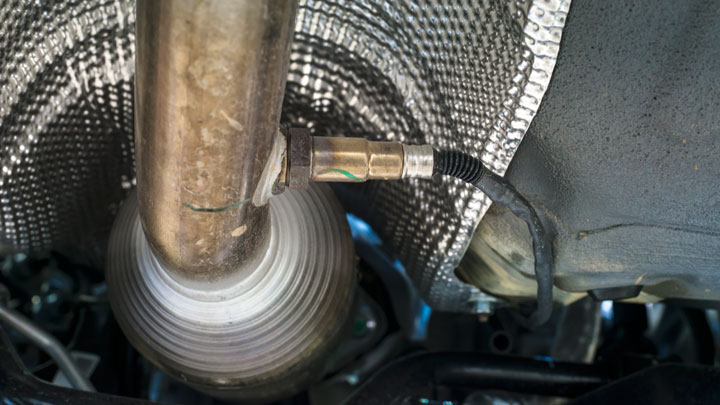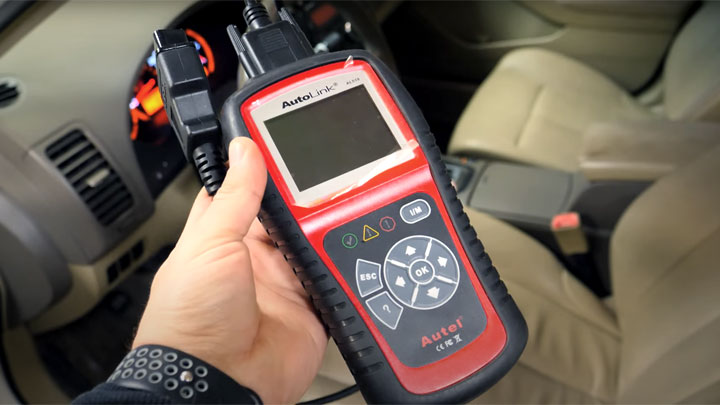P0134 Code (Symptoms, Causes, and How to Fix)
Though complex, a vehicle’s emissions controls rely heavily on oxygen sensor feedback to adjust fueling. But O2 sensors eventually fail despite their importance, logged by the computer as a diagnostic trouble code.
One common O2 sensor trouble code is P0134. This signifies a complete lack of sensor activity, rather than just inaccurate readings. Keep reading to learn what symptoms to expect when driving and how to fix it, the right way.

What Does Code P0134 Mean?
The presence of an active P0134 diagnostic trouble code indicates that a vehicle’s ECM/PCM is not registering any intelligent feedback from its corresponding O2 sensor (bank 1, sensor 1). This, in turn, leaves the ECM/PCM without reliable feedback for that particular engine bank, when attempting to calculate fuel trims.
Simply put, a vehicle’s ECM/PCM typically provides an O2 sensor (bank 1, sensor 1), with a set input voltage of approximately 450 mV. Initially, excess resistance within the O2 sensor circuit prevents a notable fluctuation within this voltage.
However, when the sensor itself warms to its specified operating temperature, this resistance drops, and voltage is correlated to the oxygen content of the exhaust.
In the case of DTC P0134, a vehicle’s ECM/PCM has determined that no viable feedback is being provided by the oxygen sensor itself, indicating relative inactivity. This code is generally set after a period of one minute with no substantial variance in voltage.
Related: P0130, P0131, P0132, P0133, P0135, P0136, P0137, P0138, P0140, P0160
Symptoms of Code P0134

Diagnostic trouble code P0134 is often accompanied by a number of additional symptoms. While not all of these symptoms are present in each particular case, they are common enough to warrant understanding.
The following are several of the most common symptoms associated with diagnostic trouble code P0134.
- Illumination of the check engine light
- Missing or poorly running engine
- Dark gray or black exhaust
- Hesitation, or stuttering under acceleration
- Dying at idle
Causes of Code P0134

There are several potential root causes, pertaining to diagnostic trouble code P0134. While the exact cause of this fault code generally varies on a case-by-case basis, a number of underlying conditions are far more common than others.
The following are several of the most common root causes of DTC P0134.
- Faulty O2 sensor
- Failed O2 sensor heater circuit
- Open O2 sensor heater circuit fuse
- Damaged connector or wiring in the O2 sensor circuit
- Compromised exhaust system
- Faulty ECM/PCM
Is Code P0134 Serious?
In the majority of cases, DTC P0134 is seen as being moderately severe in nature. A vehicle’s O2 sensors play a vital role in fuel system function, by providing feedback to an engine’s ECM/PCM. This data is used to calculate an engine’s fuel trims.
An inoperable O2 sensor limits a vehicle’s operating software from calculating these values in an accurate manner. As a result, over-fueling can occur. This, in turn, presents a number of issues, which range significantly in severity.
Not only does over-fueling reduce fuel economy, thereby causing pain at the pump, but excess fuel delivery can also damage a vehicle’s catalytic converter, necessitating eventual replacement as a result. This can be quite a costly proposition, as a catalytic convertor often carries a hefty price tag.
In any event, diagnostic trouble code P0134 should be thoroughly diagnosed and repaired at the first available opportunity. Doing so negates the onset of potential drivability issues, while also preventing further damage to your vehicle.
If you do not feel comfortable completing such repairs yourself, make an appointment with a trusted service center as soon as possible.
How to Fix Code P0134

The following steps can be followed to assist in diagnosing and repairing the root cause of diagnostic trouble code P0134. As always, be sure to consult factory-specific service literature for your particular make and model of vehicle, before attempting any such repairs.
#1 – Check For Additional DTCs
Before beginning the diagnostic process, use a reliable scan tool to check for the presence of any additional fault codes. If any additional fault codes are noted, thoroughly diagnose and repair the root cause of each before moving forward.
#2 – Perform Thorough Visual Inspection
You will begin the diagnostic process by thoroughly inspecting your vehicle’s bank 1, sensor 1 O2 sensor. Carefully check for signs of obvious damage to the affected O2 sensor’s wiring and connector, as well as the sensor itself.
Any wiring or connector damage should be repaired as necessary, while obvious damage to the O2 sensor itself will warrant replacement.
#3 – Check For Exhaust Leaks
If DTC P0134 persists, check for signs of an exhaust leak between the engine and the affected O2 sensor. Leaks of this type are typically found through a system smoke test, or by visually identifying a noticeable soot trail.
Remedy any deficiencies that are discovered.
#4 – Check For Proper Voltage At O2 Sensor
You will now check to ensure that a varying voltage, within a range specified by your vehicle’s manufacturer, is present at the affected O2 sensor. This exact range can be found within factory-specific service literature for your particular vehicle.
#5 – Verify Continuity On Feedback Wire
If proper voltage is found at the affected O2 sensor, perform a continuity test between opposing ends of the sensor’s feedback wire. This wire will run from the O2 sensor itself to a corresponding pin at the vehicle’s ECM.
#6 – Analyze Data
If continuity could not be verified between the affected sensor and its corresponding terminal at the ECM, an open within the feedback circuit is suspect. On the other hand, a satisfactory continuity test would indicate an internal ECM/PCM fault.
- Car Temperature Gauge Stopped Working? (Here’s Why) - Apr 15, 2024
- Ignition Coil vs Coil Pack (What’s the Difference?) - Apr 8, 2024
- Windshield Wipers Won’t Turn Off? (Causes and What to Do) - Apr 5, 2024
